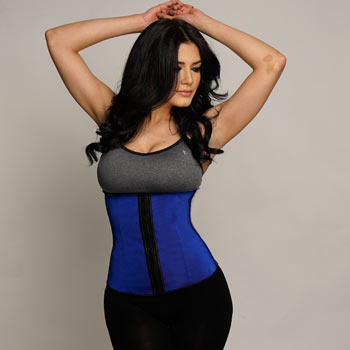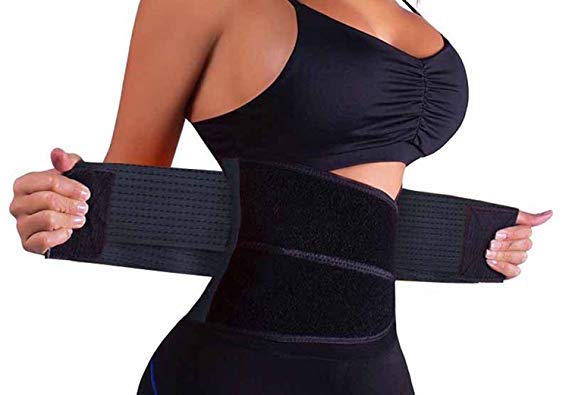12 Waist Training Tips You Should Know Before Starting Waist Training
Spend a few minutes looking for waist training tips on Google and you’ll notice a lot of contrasting opinions. On one hand, there are the people who say waist training is uncomfortable at best and dangerous at worst.
On the other hand, there are a lot of people who’ve been waist training for weeks, months, years and have experienced no downsides and a lot of curvy perks.
So what’s the difference between the two groups? Well, it has a lot to do with how you decide to practice waist training. We’d like this journey to be as smooth, as effective and as comfortable as possible for you – which is why we’ve tallied up the most important waist training tips to guide you through your hourglass journey!
Waist Train as a Lifestyle
Here’s a little secret that every successful waist trainer knows: Waist training is not just strapping on a waist trainer. It’s a lifestyle.
That means, if you’re looking to waist train in order to reduce and reshape your waist line, it will require you to look at the practice holistically.
Of course, wearing a corset or a waist cincher is part of the deal but the best results are achieved when the following 3 components work in harmony: using the best waist trainer for you, being choosy with what you put in your body – yes, a healthy diet matters – as well as what you do with your body – regular exercise is always essential.
Don’t skimp on any of the 3 crucial components and you’ll accelerate your progress and have a smoother waist training journey.
Know Which Waist Trainer Does What
Steel boned corsets, waist cinchers, fajas and waist trimmers – all these different waist trainers are often grouped together when people talk about waist training.
This is a mistake – each waist trainer is different and serves a different purpose. They also differ in terms of effectiveness and comfort level – all of which matter a lot when you’re choosing a waist trainer to wear for several hours a day.
Get to know the various types of waist trainers available – and their pros and cons – so you can make the best decision for you.
Put Your Best Foot Body Forward
You’re probably eager to start reshaping your waist as soon as possible so this might not come as the best news. Still, it has to be said because it will produce the best overall results.
If you’re overweight or unfit, take at least a few weeks to do some cardio and/or high intensity interval training (HIIT) exercises before starting waist training. Removing as much excess body fat before you begin will make waist training more comfortable and you’ll see better results faster.
Eat Little
You don’t need us to tell you this – if you’ve ever strapped on a corset or a waist cincher, you know that the immediate compression kills your appetite faster than driving past fresh roadkill.
The fact is, you won’t be able to eat very much while wearing a waist trainer so it will naturally help you reduce your portion sizes. Just make sure that you take advantage of this portion control opportunity to pack as much good, nutritious stuff into your mini-meals and gradually weed out empty calories from your diet.
Eat Often
Keep in mind that because you’ll be eating small portions, you’ll also need to eat more often.
Seriously, don’t skip meals! You might be tempted to, especially in the beginning because the compression simply makes you not want to eat. Eat anyway. Otherwise, you will be hangry. Very, very hangry. Plus, not eating is actually counterproductive to weight loss.
So take the time to plan 3 healthy meals into your day and then break them down into 6 smaller portions and eat them! That way, you get all the nutritional goodness your body needs without the discomfort from having eaten too much in your waist trainer.
Eat This, Not That
One of the best things about waist training is that the reduced appetite naturally helps you make better food decisions. Especially since you’ll quickly notice that you will sometimes suffer unwanted consequences if you slip up.
What do we mean by this? Some foods and drinks cause things like gas, bloating, indigestion and heartburn when ingested with a waist trainer on.
You see, corsets and cinchers compress the stomach and can make digestion a little more difficult. That means the foods you eat have immediate consequences.
So, for your comfort (and overall health), avoid the following foods and drinks…
- Fried, greasy foods
- Fatty foods (take longer to digest)
- Carbonated drinks
- Spicy foods
- Coffee and alcohol
- Salty foods (result in water retention which can contribute to feeling bloated)
Fiber is Your Friend
A corset constrains your internal organs and slows down your digestive system, which can cause constipation. To ensure your digestive system functions properly, give it a little boost by eating lots of fiber.
Fiber combats constipation and studies have shown that eating two different types of fiber a day can keep all digestive systems on go. Coconuts, avocados, figs, peas, legumes, lentils and chia seeds are all good sources of fiber. Want more fiber tips for waist training?
Rotate Your Waist Trainers
You know by now that each waist trainer serves a different purpose so why would you just stick to one?
Corsets are the ultimate waist trainer, gradually reshaping your waistline into an hourglass – but you can’t wear one during workouts and it can be difficult to even go around your day to day activities in a corset.
That’s why we recommend having a corset to waist train when you are more or less sedentary – i.e. at a desk job at an air-conditioned office, watching TV, chilling on the sofa – and opting for other waist trainers that are more suitable for other activities.
For example, a latex waist cincher is a lot more comfortable and suitable for everyday activities that require some physical exertion, i.e. cleaning the house, doing your errands around town and even for practicing waist training while sleeping. These are also smooth under clothes so you can wear them without anyone being any wiser.
A waist trimmer is also a useful addition to your waist training regimen since these help heat up your core temperature and torch belly fat when you’re doing cardio or HIIT. Overall, a great way to speed up results by getting rid of extra fat while you waist train.
Stretch and Strengthen
There’s a reason exercise is important in waist training. Actually, there are many reasons…
- Regular cardio is one of the best ways to not only stay healthy but to rev up your metabolism and burn fat. Waist training helps you reshape your waistline but if you’re carrying more than a little extra around your belly, it’s harder to get results. Slimming down with regular cardio speeds up the progress.
- Wonder how quickly it’ll take you to see results from waist training? Well, every body differs with some taking to waist training very easily while others are a little more resistant. One thing that contributes to the ease of corset wearing? It’s how pliable the muscles in your core are. Specifically, if you have a lot of side muscle flexibility, you’ll find corset training easier than someone who is very solid. Yogis rejoice!
- Wearing a tight corset for long periods can result in weak, flabby core muscles. You obviously do not want this. Luckily, it’s easily avoided by working in core strengthening exercises to keep your abs and back strong. Here are some gentle, effective exercises to do while you waist train!
- When you work out, muscle fibers tear and then rebuild themselves. When you combine workouts with cinchers and corsets, your muscle fiber is being rebuilt while being molded, allowing you to see results faster.
Don’t Squeeze Too Tight
One of the best ways to fail at waist training as soon as you start is to be too overeager and go too tight, too soon. This not only makes waist training a miserable experience for you, but it ruins your corset faster and is just overall plain unnecessary.
The crucial keys of safe and successful waist training is moderation and listening to your body. The goal of waist training is to gradually reshape your waistline over time. That means the corset or cincher should be tightened incrementally as you go along.
Going too tight, too quick won’t result in faster results – it’s like suddenly deciding to lose weight and then trying to run for 8 hours straight. It’s just not a good idea.
If you experience pain, numbness and difficulty breathing – loosen your waist trainer, both for your sake and your corset’s.
H2O is the Way to Go
If you’re working out in your waist cincher or waist trimmer – you should not be workout out in a corset – you are going to sweat. Especially if you’re wearing a waist trimmer, you’ll be sweating buckets.
Dehydration is the most avoidable side effect of waist training so make sure to avoid it by replenishing yourself with plenty of water throughout the day.
Skip the soft drinks and fruit juices and go solely with water. If you really must drink something else, grab some coconut water – it’s a healthy, low calorie way to replenish your electrolytes and keep yourself hydrated.
Start Slow, Start Small
Your body must become accustomed to waist training. And this isn’t going to happen overnight.
Similarly, the waist trainer itself takes time to become accustomed to your body. This is what “seasoning” a corset means – it’s the period of time when you gradually break in a new corset.
Wearing your waist trainer for long periods of time from the beginning is not helpful for your body nor the trainer. So think of the first few weeks of training as a “getting to know you” period between your body and the trainer and don’t overdo it.
Go slow, listen to your body and find out exactly how long to wear your waist trainer a day!






